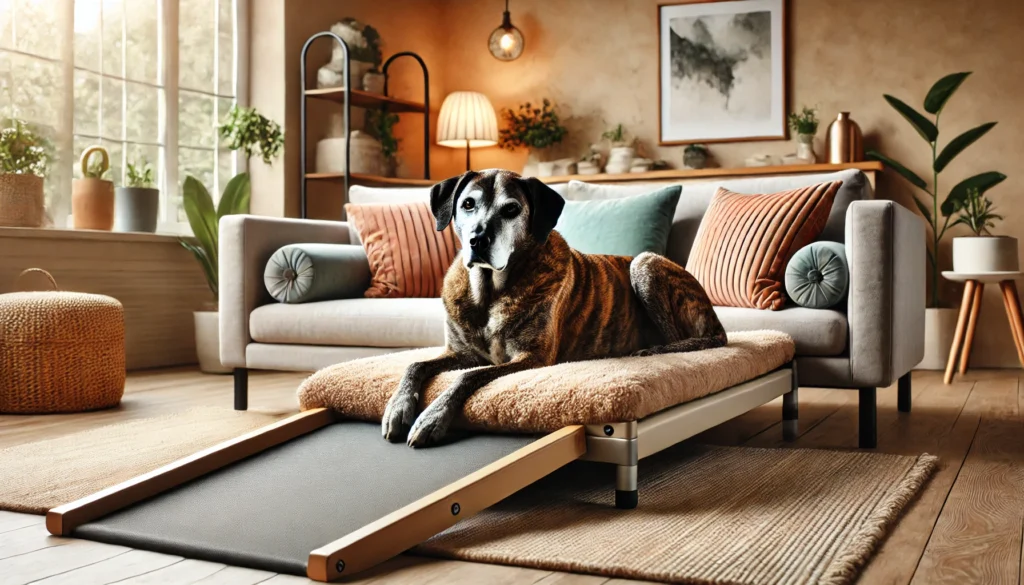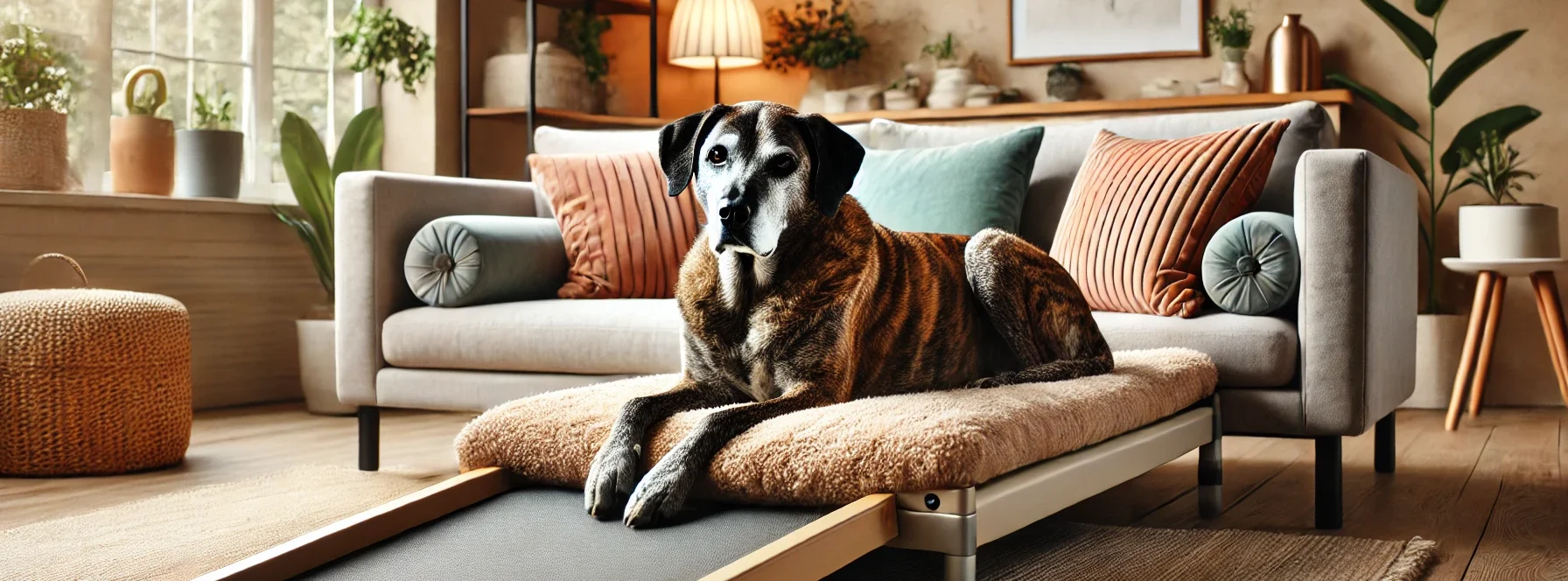Comfortable Living Spaces for Senior Dogs: Creating a Safe and Cozy Home
As dogs age, their needs change, and so should their living environment. Senior dogs may struggle with mobility issues, arthritis, and decreased vision, making it essential to adjust their surroundings to help them stay comfortable and safe. This blog will guide you through creating a home environment that caters specifically to the needs of your aging canine companion.
1. Orthopedic Beds: Support for Restful Sleep
One of the most beneficial changes you can make for a senior dog is providing an orthopedic bed. These beds are designed with memory foam to support the dog’s joints, relieve pressure points, and enhance sleep quality. Orthopedic beds also help in maintaining body temperature, providing warmth in the winter and coolness in the summer. Place these beds in easily accessible locations where your dog likes to spend time, ensuring they don’t have to travel far for a comfortable nap.
2. Ramps and Steps: Ease of Mobility
Many senior dogs find it difficult to jump up to their favorite spots on couches or beds due to hip or joint issues. Ramps or pet-friendly steps can help alleviate this problem. These aids should have a gentle incline and be sturdy enough to support your dog’s weight. Additionally, ensure they are covered with a non-slip surface to prevent falls.
3. Non-Slip Flooring: Preventing Slips and Falls
Hardwood and tile floors can be slippery and pose a risk to an elderly dog, potentially causing falls or injuries. Consider placing non-slip rugs or mats in high-traffic areas, or invest in wall-to-wall carpeting to provide better traction. This simple change can make a significant difference in your dog’s ability to navigate their living space safely.
4. Accessible Food and Water Stations
Senior dogs may have difficulty bending down to eat or drink. To help them, consider elevating their food and water bowls. This can be done using a raised feeding station or simply placing their bowls on a low stool. Ensure the setup is stable and does not slide around when your dog uses it.
5. Temperature Control: Comfort in All Seasons
Older dogs are more susceptible to temperature extremes. Ensure your home is well-insulated and maintain a comfortable indoor temperature. During winter, provide warm blankets or a heated bed, and in summer, ensure there is plenty of cool, shaded space and adequate ventilation.
6. Quiet Spaces: Stress-Free Zones
Senior dogs often need more quiet time. Designate a part of your home as a quiet space where your dog can retreat from noise and activity. This area should be away from high traffic zones and equipped with a comfy bed and their favorite toys.
7. Regular Cleaning: Hygiene and Health
Maintain cleanliness in areas where your dog spends most of their time. This includes regularly washing their bedding, keeping floors free of debris, and ensuring their eating area is clean. Good hygiene helps prevent infections and maintains overall health.
Adapting your home to meet the needs of your senior dog is a beautiful way to show your love and care. By making a few adjustments, you can greatly enhance their quality of life, making their golden years truly golden. Remember, each dog is unique, so consider your pet’s specific needs and preferences when implementing these changes. Your efforts will help ensure that your senior dog lives a comfortable and happy life.




